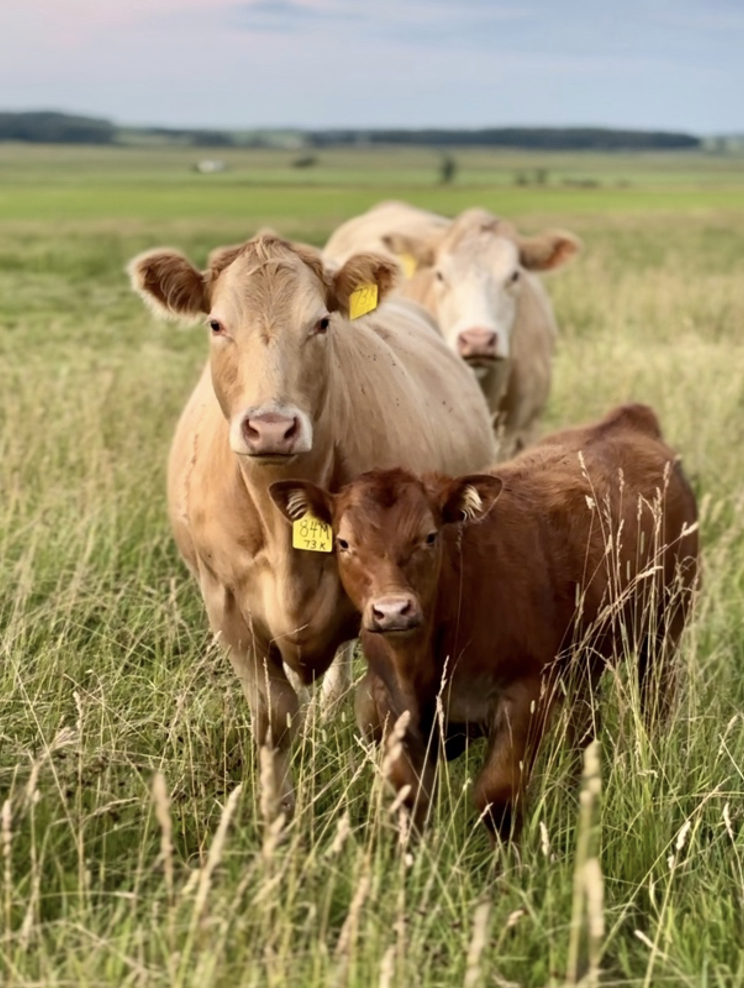Cashing in on your calf crop: Adding value at the auction block

As we near the feedlot fall run and cow/calf producers market their calves at the highest prices received to date, every additional pound of gain has greater profit potential.
Profitability and feasibility vary from operation to operation, and producers should invest in management and nutritional strategies that will work for their specific operation. Developing a marketing plan that evaluates different management decisions, health protocols, and programs is essential to identify what is most profitable for each independent operation.
How can cow/calf producers add additional value to their future calf crops?
Merck Animal Health, in conjunction with Superior Livestock Auction and Drs. Tonsor and Renter of Kansas State University, compiled data on 898,500 calves averaging 571 lb at time of sale from January to December 2023, consisting of 7,612 lots with an average US national price received of $2.63/lb. The Superior Auctions data set explores the impact of genetics, health, and management factors that impact the price received on 5-weight calves at time of sale.
Steers consistently receive a higher dollar value compared to heifers, with 5-weight steers receiving an additional $26.33/cwt over heifers. Much of the spread in steer and heifer-calf pricing is driven by the historical reluctance of the feedyard sector to feed heifers, although, with the tightened feeder cattle supply in the US, heifers are currently receiving equal live and dressed pricing as steers in the fat cattle market.
It is evident from pricing data that cattle buyers prefer polled calves that are medium to medium-large in frame. Polled calves/no horns consistently bring a premium in the ring, returning an additional value of $17/head over calves with horns present. Medium to medium-large frame calves returned $22/head over calves with small frame.
Genetic merit impacts cattle buyer willingness to pay. For example, for 5-weight calves marketed through Superior Livestock Auctions, calves that were marketed with the Superior Progressive Genetics Program claim returned $20/head more than calves marketed without the claim. The Superior Progressive Genetics program identifies load lots of calves that are sired by top genetics in the US beef industry. Heterosis offers value in terminal cattle, specifically when crossing British breeds (Angus, Hereford) known for their marbling ability with Continental breeds (Charolais, Limousin, Simmental) known for their growth potential and increased yield.
With reduced beef cow numbers and cattle supply tightening, every additional pound of gain on the calf at time of sale matters. The use of one suckling calf implant administered after 2 months of age results in 23 lb of additional gain at time of sale. Using the 2023 national average price received of $2.63/lb, implanting with one suckling calf implant that costs ~$1.50 per dose, returns $59/head or $10.33/cwt.
If producers forgo the use of a suckling calf implant to enroll in a Non-Hormone Treated Cattle (NHTC) program or Global Animal Partnership (GAP) program, the average return for NHTC and GAP program calves, compared to calves not enrolled in either program, was $37/head for NHTC and $25/head for GAP.

How can cow/calf producers add additional value to their calves when marketing this fall?
A healthy calf is a profitable calf, and proper nutrition and supplementation are important for calf performance. An additional 30 to 60 pounds can be gained prior to time of sale via creep feeding. There are various types of creep feed systems, including: grain-based high energy, limit-fed high protein, and high-quality forage creep. Producers should calculate their cost of gain when analyzing the profitability of creep feeding, to ensure that the value received for additional pounds of gain overcome the cost of the feed. Producers can utilize https://beef.unl.edu/calculating-value-of-gain to better understand value of gain. With calf prices being exceptionally high for the 2024 fall run, there is a greater likelihood that management strategies, like creep feeding, return a profit.
Value-added health programs influence calf profitability and producers should inquire with their veterinarian about programs available. Pre-conditioned calves consistently top the market and implementing weaning prior to shipping is favored.
As feeder calf prices increase, don’t forget about best management practices– every additional pound gained comes with increased value.
Additional Resources:
Hutcheson, J. 2024. What practices pay off at the auction block?
Wilke, K. H. and H. Clark. 2022. Management, health, and nutritional considerations for weaning calves. https://extensionpubs.unl.edu/publication/g2057/na/html/view
